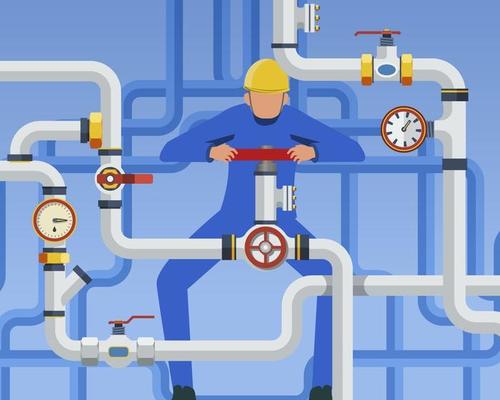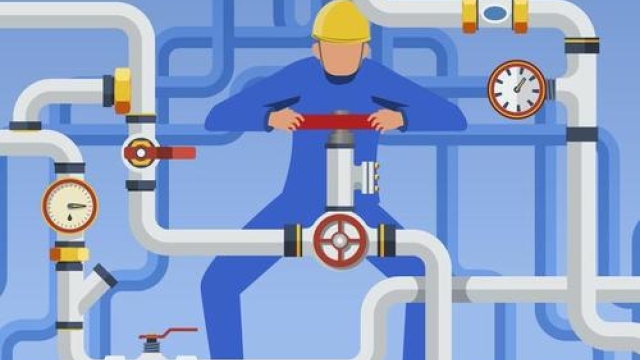
When it comes to keeping our homes and buildings functioning smoothly, few systems are as essential as plumbing. From the moment we turn on the faucet or flush the toilet, we expect a reliable flow of clean water and an efficient disposal of waste. Plumbing may often go unnoticed when everything is working properly, but when an issue arises, it can quickly become a homeowner’s worst nightmare. Whether you’re a DIY enthusiast looking to tackle a plumbing project or simply wanting to better understand the intricate workings of your home’s plumbing system, this comprehensive guide will provide you with the knowledge and techniques you need to achieve plumbing success. So, let’s roll up our sleeves, put on our plumber hats, and delve into the world of pipes, valves, and drains to ensure our pipe dreams become a reality.
Understanding Plumbing Basics
Plumbing is an essential aspect of any functional building, allowing the distribution of clean water and the removal of waste. Understanding the basics of plumbing is crucial for homeowners and professionals alike to ensure a reliable and efficient plumbing system.
The first fundamental aspect of plumbing is the water supply. A water supply system typically consists of a main water line connected to a utility source or a private well. This main line channels water into the building, branching out to various fixtures such as sinks, toilets, showers, and appliances that require water.
In addition to the water supply, plumbing systems also include drainage and waste disposal. Waste lines carry wastewater and sewage away from the building, connecting to the main sewer line or a septic system. Proper waste disposal is essential for maintaining a hygienic and safe living environment.
Lastly, every plumbing system requires a network of pipes and fittings to connect the various components. Pipes, typically made of copper, PVC, or PEX, transport water to fixtures and drain away wastewater. Fittings, such as elbows, tees, and couplings, play a crucial role in directing the flow of water and ensuring leak-free connections.
Understanding these basic components of plumbing sets the foundation for further exploration into the various intricacies of the field. From installing fixtures to diagnosing and fixing common plumbing issues, having a grasp of these basics is essential for successful plumbing endeavors.
Stay tuned for the next section of our comprehensive guide to plumbing success, where we will delve deeper into the intricacies of plumbing systems and explore common problems and their solutions.
Essential Tools and Equipment
When it comes to Plumbing, having the right tools and equipment is essential for success. In this section, we will explore some of the must-have items that every plumber should have in their toolbox.
First and foremost, a quality set of wrenches is crucial. Adjustable wrenches, also known as crescent wrenches, come in various sizes and are perfect for tightening and loosening different types of plumbing fittings. Additionally, pipe wrenches, with their strong jaws and sturdy construction, are indispensable for dealing with stubborn pipe connections.
Another indispensable tool is the pipe cutter. This handy device allows plumbers to make clean, precise cuts on different types of pipes, such as PVC, copper, or galvanized steel. By ensuring accurate cuts, pipe cutters help guarantee leak-free joints and fittings.
Lastly, let’s not forget about the trusty plunger. Whether it’s a clogged sink, toilet, or shower drain, a plunger is a go-to tool for every plumber. With its suction power, a plunger can help dislodge stubborn blockages and restore proper flow in no time.
As you can see, having these essential tools and equipment is paramount for any plumber to tackle various plumbing challenges efficiently. So make sure to have these items in your toolbox to set yourself up for success in the world of Plumbing.
Common Plumbing Issues and Troubleshooting
Plumbing problems are a common occurrence in many households, causing inconvenience and frustration. Fortunately, with a little troubleshooting, you can often resolve these issues on your own without having to call in a professional.
-
Clogged Drains: One of the most frequent plumbing problems is a clogged drain. This can happen in sinks, showers, or toilets, and it’s usually caused by a buildup of hair, soap residue, or food particles. To tackle this issue, start by using a plunger to try and dislodge the blockage. If that doesn’t work, you can try using a drain snake to remove the debris. Alternatively, a mixture of baking soda and vinegar poured down the drain can sometimes break down the clog. Remember to run hot water afterward to help clear any remaining debris.
-
Leaky Faucets: Leaky faucets not only waste water but can also drive up your water bill. The most common cause of a leaky faucet is a worn-out washer or O-ring. To fix this, turn off the water supply to the faucet, then disassemble the handle and replace the washer or O-ring. If you’re unsure about the exact replacement part, take the old one to a hardware store to find a suitable match. Once you’ve replaced the faulty component, reassemble the faucet, and turn on the water supply to check if the leak has been resolved.
-
Running Toilets: A running toilet can be both annoying and wasteful. It’s often caused by a faulty flapper valve or an issue with the float mechanism inside the tank. To address this problem, start by checking the flapper valve. If it’s warped or damaged, you can easily replace it with a new one. If the flapper valve seems fine, adjust the float mechanism to ensure it is sitting at the correct water level. You can usually find instructions for adjusting the float in the toilet’s user manual. By fixing these components, you should be able to stop your toilet from running unnecessarily.
By understanding these common plumbing issues and undertaking a bit of troubleshooting, you can save both time and money. However, remember that if the problem persists or if you’re not comfortable tackling it yourself, it’s always wise to seek the help of a professional plumber.


